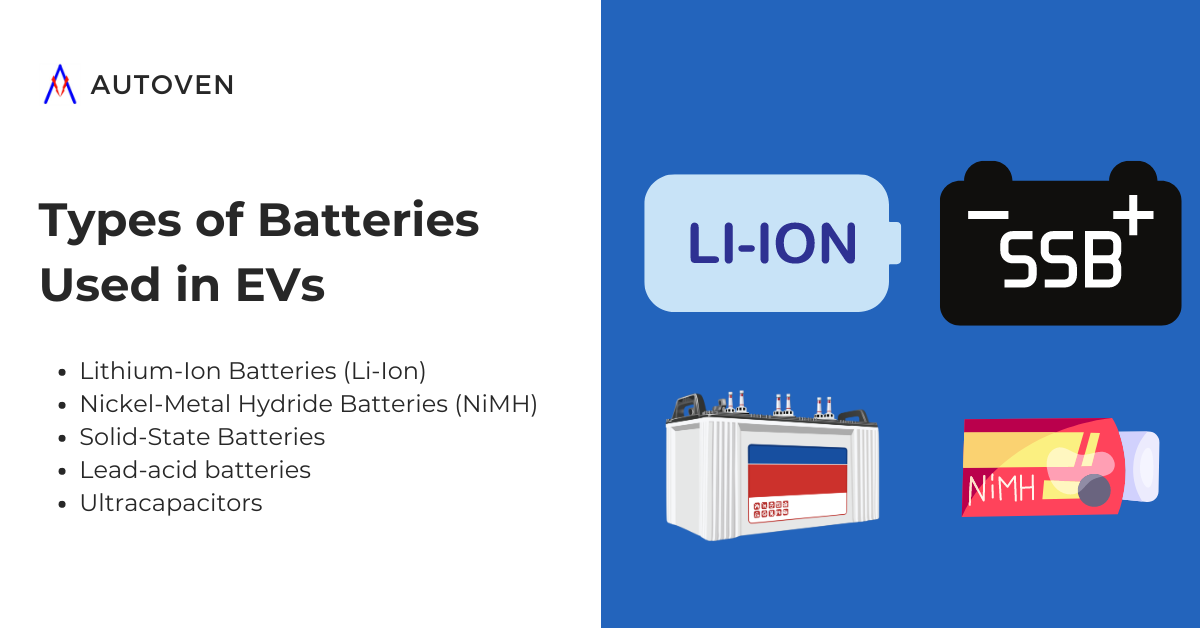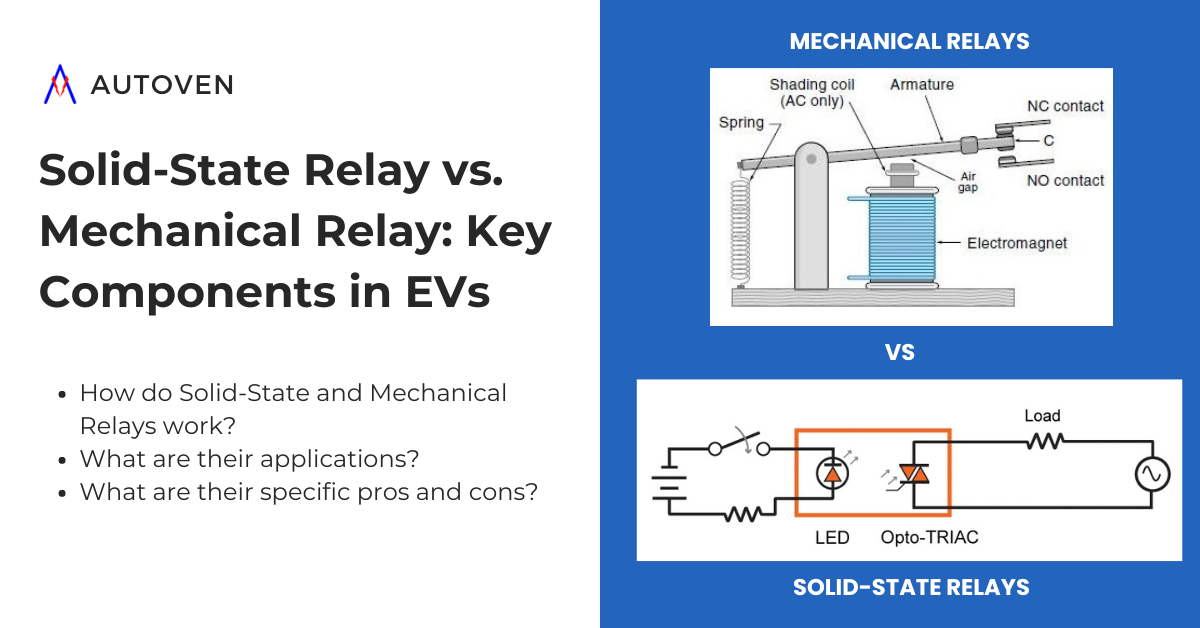Introduction: Why Battery Selection is a Game-Changer for EV OEMs and Fleet Operators in India
India’s electric vehicle (EV) revolution is charging ahead, with a surge in demand for electric two-wheelers, three-wheelers, commercial vehicles, and shared mobility solutions. For EV OEMs (Original Equipment Manufacturers) and fleet management companies, battery selection is not just a technical decision—it’s a business strategy.
The battery chemistry, performance profile, and lifecycle costs directly impact:
- Vehicle range and uptime
- Charging turnaround and infrastructure planning
- Safety standards and compliance
- Total Cost of Ownership (TCO)
- Customer satisfaction and ROI
In this guide, we explore the different types of EV batteries available on the market and how they align with Indian use cases, whether you’re building EVs for dense urban mobility or operating large-scale electric fleets.
Why EV Battery Matters for Indian EV Businesses
The Indian EV ecosystem has unique challenges—hot climate conditions, range anxiety, power grid limitations, and varying payloads across cities and highways. Therefore, choosing the right battery technology can mean the difference between scalable success and operational bottlenecks.
Batteries influence:
- Energy density → impacts range
- Thermal stability → affects safety in Indian temperatures
- Cycle life → impacts replacement cost and downtime
- Charging rate → defines fleet turnaround and infrastructure needs
- Weight and size → critical for two-wheelers and commercial EVs
Let’s explore each EV battery type in the Indian context.
Types of EV Battery
Several types of batteries are used in EVs, depending on the application. Each has its own characteristics, advantages, and disadvantages.
1. Lithium-Ion Batteries (Li-ion): The Backbone of India’s EV Industry
Lithium-ion batteries are currently the preferred battery type for Indian EV OEMs, thanks to their high energy density, fast charging capabilities, and modular design.
Subtypes of Lithium-Ion EV Battery Used in Indian EV’s:
Lithium Nickel Manganese Cobalt Oxide (NMC)
- Use Case: Passenger EVs, electric two-wheelers, premium fleets
- Strength: High range and energy density
- Challenge: Expensive and sensitive to thermal stress
- Why OEMs Choose It: Customizable for high-energy or high-power applications
Lithium Iron Phosphate (LFP)
- Use Case: Both passenger and commercial EVs, 2 & and 3-wheeler fleets, electric buses, and delivery vehicles
- Strength: Excellent thermal stability and longer cycle life
- Challenge: Lower range (energy density) than NMC
- Why Fleet Managers Prefer It: Safer for Indian temperatures, lower cost per kWh
Lithium Manganese Oxide (LMO)
- Use Case: Shared electric vehicles (e-rickshaws, delivery EVs)
- Strength: High thermal stability
- Challenge: Lower lifespan
- Used In: Combination packs with NMC to optimize cost and safety
Lithium Manganese Iron Phosphate (LMFP)
- Use Case: Next-gen commercial EVs and affordable two-wheelers
- Strength: Better safety + improved energy density
- Why it’s Gaining Attention: Balance between cost, safety, and performance
Lithium Titanate (LTO)
- Use Case: Electric buses, high-frequency fleet use
- Strength: Ultra-fast charging and extreme cycle life
- Challenge: Lower energy density
Ideal for: Fleet turnaround in under 10 minutes
2. Nickel-Metal Hydride (NiMH): Phased Out But Still in Hybrids
While not widely used in modern Indian EVs, NiMH batteries still appear in hybrid models.
- Pros: Durable, safe at high temperatures
- Cons: Low energy density, bulky, costly
Use Case: Legacy hybrids, not recommended for new EV programs
3. Solid-State Batteries: The Future Tech Worth Watching
Solid-state batteries are expected to transform EV design by offering:
- 2x energy density of current Li-ion
- Safer, leak-proof designs
- Longer cycle life and compact footprint
Though in R&D or early-stage production, solid-state technology is highly relevant for OEMs planning for 2027–2030 rollouts.
4. Lead-Acid Batteries: Low-Cost but Low-Performance
Still used in some low-speed electric vehicles, backup systems, and e-rickshaws due to cost.
- Pros: Affordable, easily available
- Cons: Low energy density leading to high weight, short lifespan
Verdict: Not ideal for scalable EV fleets or OEM design
5. Ultracapacitors: A Power Boost, Not a Standalone Solution
Ultracapacitors are excellent for delivering quick bursts of power and enhancing regenerative braking in fleet EVs.
- Pros: Fast charging/discharging, long lifespan
- Cons: Not suitable for main energy storage
Best Used With: LFP or LMFP battery systems in buses or heavy-duty EVs
The Role of Battery Management Systems (BMS) for Indian OEMs
Every battery pack requires a robust Battery Management System (BMS) to:
- Monitor voltage, temperature, and charge levels
- Prevent overcharging, deep discharging, and thermal runaway
- Balance cells across the pack
- Ensure compliance with AIS-038 and safety standards
Autoven’s AV BMS offers scalable, smart solutions with modular configuration, fast calibration for different battery chemistries, and real-time diagnostics—ideal for Indian EV OEMs and fleet integrators.
Why Battery Calibration Matters
Battery chemistries vary widely, and precise calibration ensures optimal performance and safety.
For OEMs:
- Improve range accuracy
- Enable safer fast charging
- Reduce warranty claims
For Fleets:
- Extend battery lifespan
- Lower downtime
Predict replacement timelines more accurately
Final Thoughts: Align Battery Selection with Business Goals
Battery choice should not be one-size-fits-all. It should align with:
- Use case (two-wheeler vs. e-bus vs. cargo van)
- Operational terrain (urban vs. rural)
- Climate (heat resistance is key in India)
- TCO and funding model (leasing, ownership, or swapping)



